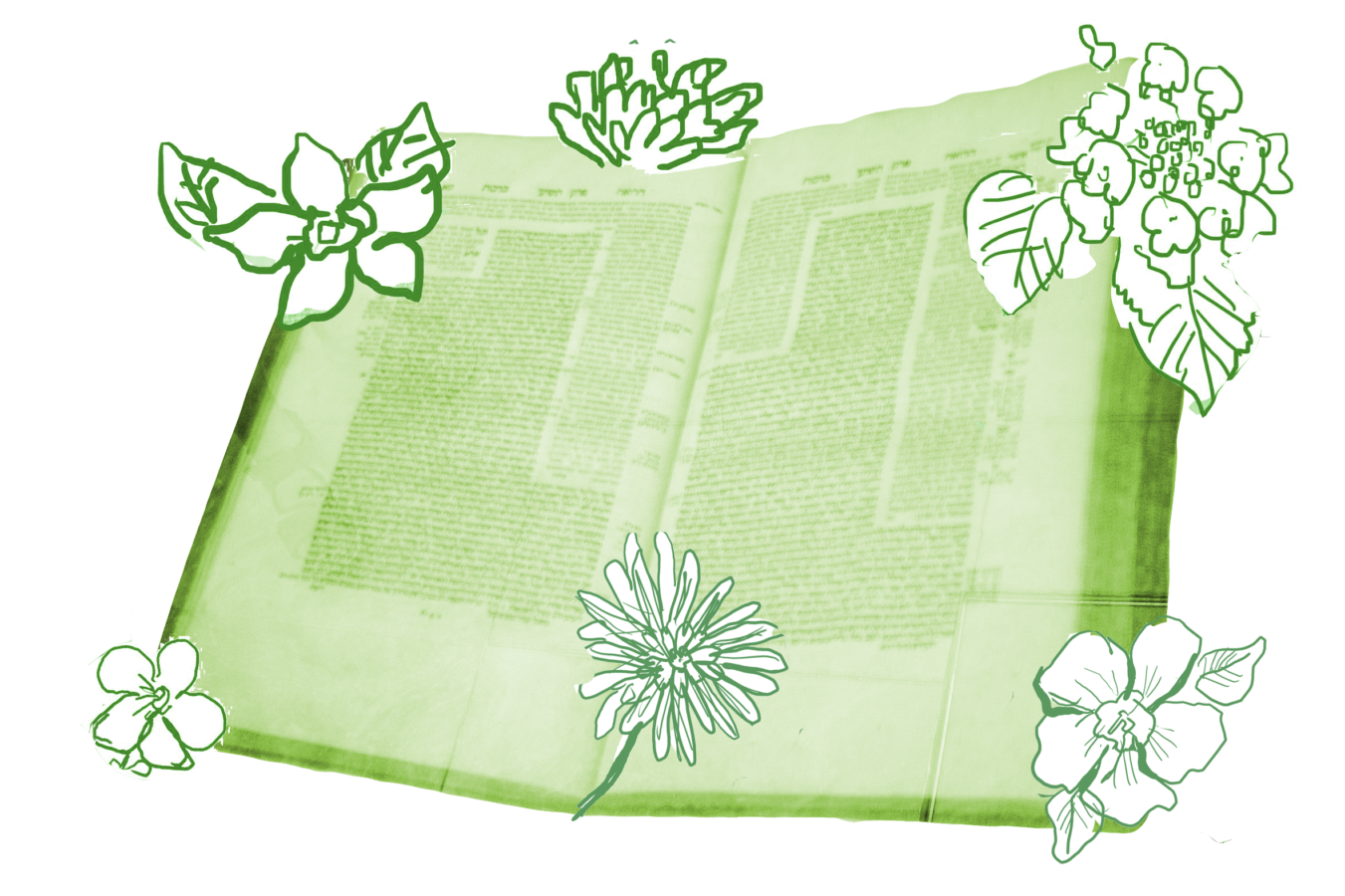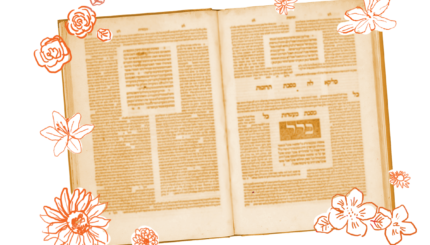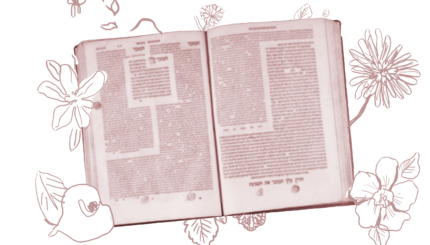Many modern biblical scholars believe that multiple sources were brought together to form the Torah. They suggest that some books, like Genesis, are a mixture of a number of sources, while others, like Deuteronomy, appear to contain predominantly one voice.
The rabbis of the Talmud likely would not have agreed with that claim. But the question of whether the Torah is one book or five distinct ones was a live one for them and comes up on today’s daf:
The people of the Galilee sent a question to Rabbi Helbo: What is (the halakhah with regard to) reading from chumashim (scrolls containing only one of the five books of the Torah) in the synagogue in public?
Today, the word chumash refers to the text of the Five Books of Moses published in book form, which is how synagogue attendees typically follow along during the Torah reading. But the word derives from the Hebrew for five, and in talmudic times it referred to a scroll containing only one of the five books. The question for Rabbi Helbo was whether it’s OK to use one of those scrolls for the public Torah reading or if only a complete scroll is acceptable. It’s a good question, and it stumps Rabbi Helbo, who asks several other rabbis who also don’t know. Eventually, an attempt is made to answer the question based on this teaching.

Help us keep Jewish knowledge accessible to millions of people around the world.
Your donation to My Jewish Learning fuels endless journeys of Jewish discovery. With your help, My Jewish Learning can continue to provide nonstop opportunities for learning, connection and growth.
Rabbi Shmuel bar Nahmani says that Rabbi Yohanan says: With regard to a Torah scroll that is missing even one sheet of parchment, one may not read from it in public.
If a Torah scroll that is missing one piece of parchment can’t be read in public, then it is reasonable to conclude that one that is missing four out of five books shouldn’t be read either. But the Gemara rejects this argument, claiming that Rabbi Yohanan’s statement does not apply here. Why? Because Rabbi Yohanan is talking about a deficient scroll, one that is missing a page, while in our case the scroll was presumably written that way.
Further down the daf, the Gemara relates another dispute that may shed light on this question.
Rabbi Yohanan says in the name of Rabbi Bana’a: The Torah was given scroll by scroll.
Rabbi Shimon ben Lakish says: The Torah was given as a complete book.
If you agree with Rabbi Bana’a that the Torah was given one scroll at a time, then you might be inclined to tell the people of the Galilee that it is OK to read from a scroll that contains only one of the five books, as each of the five is a book in and of itself. But if you agree with Rabbi Shimon ben Lakish and think that the Torah was given as a complete document, then you likely believe that only a complete Torah scroll may be used for public readings.
The Gemara doesn’t answer this question, so we’re still no closer to knowing what to tell the people of Galilee. Luckily, Rabba and Rav Yosef offer us a ruling, which ultimately becomes codified into law:
One does not read from chumashim in the synagogue out of respect for the community.
Reading from a scroll that contains only one of the five books is considered disrespectful to the community, and so they teach that it’s proper to read from a scroll that contains the full Torah.
We may not get a final answer to whether the Torah was given at once or one part at a time. But when it comes to the question of how we read it in public, the answer is clear:ead it from a scroll that contains the complete work, regardless how you think its pieces came together.
This piece originally appeared in a My Jewish Learning Daf Yomi email newsletter sent on July 15th, 2023. If you are interested in receiving the newsletter, sign up here.



